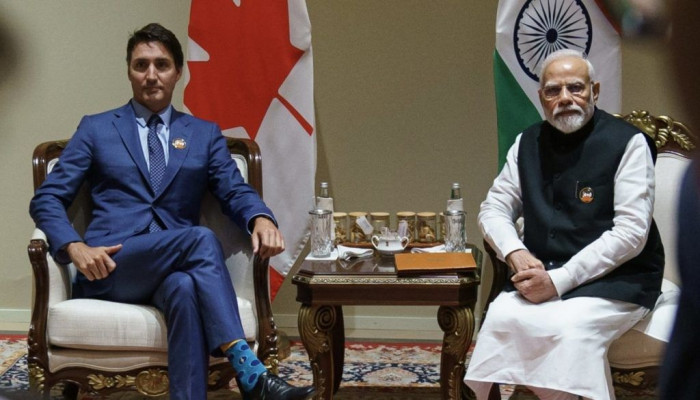The preamble of the Indian constitution reads “We the people of India having solemnly resolved to constitute India into a sovereign socialist secular democratic republic………do hereby adopt, enact, and give to ourselves this constitution.” The sovereign people of this land gave themselves a constitution, an essential rulebook for a constitutionally guided democratic order. Over the length of 395 articles, the Constitution contains the art of modern statecraft, division of power, rule of law, and a unique feature of a democratic polity: a set of rights for its citizens. Over the years, the country’s jurisprudence and scholarly discourses have successfully established that Fundamental Rights are the critical feature of the basic structure of Indian Constitution. In giving themselves the Constitution, the people had reserved these rights for themselves.
Once India commenced its journey of statehood and governance, citizens’ Fundamental Rights did come under threat. In independent India, A.K. Gopalan v. State of Madras (1950) opened Pandora’s box for numerous cases that shaped the constitutional discourse around Fundamental Rights. Interestingly, the prime contender of citizens’ rights is the State. Here, the story of Article 19 (1) (a) warrants special attention. Freedom of speech and expression although have been granted to the people of India, the framers have always treated these rights with caution. A series of diligent discussions around ‘due process’ to ‘reasonable restriction’ were some of the common sights of the Constituent Assembly Debates (CAD), to conditionally restrict the exercise of rights by the citizens. It is rather remarkable for a country that released itself from the spell of oppressive colonial rule, to adopt a constitution that legitimises preventive detention measures. Preventive detention was significantly thriving during the infamous Emergency period under Prime Minister Indira Gandhi.
Interestingly, what was a widely exercised law after the independence of the Indian state was the law of sedition (IPC section 124A). The legislative genesis of the law can be traced back to 1870, which briefly reads any attempt of expressing/inciting disaffection towards the Government established by law as seditious. Notably, sedition was widely instrumentalised during colonial period to curb decent, free speech, and most attempts of freedom struggle. It is precisely in this context, the restriction on free political speech draws our attention. History of India’s jurisprudence presents us with a string of cases where the constitutional courts at times showcase some interesting stances. Whereas there are cases like Romesh Thapar v. State of Madras (1950), Sakal Papers (P) Ltd., And Others v. Union of India (1961), or Ram Nandan v. Sate (1958), the Court cemented a progressive outlook towards the right to free speech. But, at the same time, the precedents set by cases like Kedar Nath Singh v. State of Bihar (1962) where legal voids are filled by the Court to corroborate the executive’s narrative cast doubts over the Judiciary’s role as a defender of constitutional rights.
These concerns knock at our doors again owing to the recent increase in the widespread exercise of the sedition law and active effort to curb free speech. The polity witnessed two trends of behaviour on the part of the State: first, free speech was increasingly conflated with ‘hate speech’ and second, the courts became completely ignorant of the protection of citizen’s constitutional rights. However, in the subsequent years the Supreme Court’s verdicts in Shreya Singhal v. Union of India (2015), Anuradha Bhasin v. Union of India (2020), and Amish Devgan v. Union of India (2020) raised some crucial aspects that impel us to rethink the significance of Fundamental Rights and the role if the judicature as the ultimate guardian of these rights. The Court’s verdicts in these cases could be read through the following three lenses: first, the fundamental logic behind free speech is to encourage a rich democratic environment where free political thinking can take place. Second, the prima facie reason behind granting freedom of expression is to reinforce popular sovereignty where diverse political concerns can be equally represented, and third, laws concerning hate speech whose constitutional credentials are questionable, require a broader interpretation. Rather than clinging to the old standard of interpreting an act’s probability to disrupt public order, the Court noted an approach that takes cognizance of the direct consequences of a speech in question.
The Court’s behaviour in handling the cases of free speech where the executive is a contender raises some important concerns about the Constitution and the role of the judicature as its guardian. Parliamentary sovereignty and an independent judiciary, both constitute a significant part of the Constitution’s basic structure. However, over the seven decades of co-existence, these institutions raise some critical questions about their institutional arrangement and constitutionally granted roles: First, although the Fundamental Rights are justiciable, are they always under the threat of violation by the State? Second, to what extent an independent judiciary is instrumental in keeping a check on the sovereign power uniquely exercised by the executive? Third, to whom does the Constitution belong?: to the right-bearing citizens or to the institutions of the State.
The Supreme Court had in 2022 intervened to examine the constitutionality of the sedition law in India effectively suspending all pending and future cases under this law. However, section 124A is not the only stick at the hands of the executive. There are equally effective and arbitrary measures available for example, section 2(1)(o)(iii) of the Unlawful Activity Prevention Act (1963) which defines sedition as a criminal offense leaving its legal definition substantially vague and unclear. The frequent application of these laws by the State against the citizens poses some crucial concerns about the judicial protection of Fundamental Rights and the constitutional necessity of the basic structure.
The progressive transformation of human civilisation from the social contract to constitutional democracy is marked by a crucial feature: a set of rights that protect the citizens from the State’s sovereign power and at the same time offer them equal say in governance. The logic behind this reasoning can be found in constitutional morality, elaborately discussed in the Constituent Assembly Debates (CAD). The premise of constitutional morality encourages argumentative sensibilities against a singular mode of thinking. The ultimate goal is to preserve a system where popular sovereignty and right -bearing citizens can co-exist together. In representative democracies, citizens exercise their electoral rights to assert popular sovereignty. However, it is notable that notwithstanding the formation of a representative government, the right-bearing citizens do not reduce to something lesser than popular sovereignty. The constitution has created an arrangement where both equals can co-exist together. The basic structure of the Indian Constitution asserts the rule of law as one of the fundamental elements of Indian polity applicable to both the State and its citizens. It is the constitutionally granted duty of the judiciary to treat everyone equally under the law.
The author is a Research Scholar, Shiv Nadar Institution of Eminence








 OpinionExpress.In
OpinionExpress.In















Comments (0)